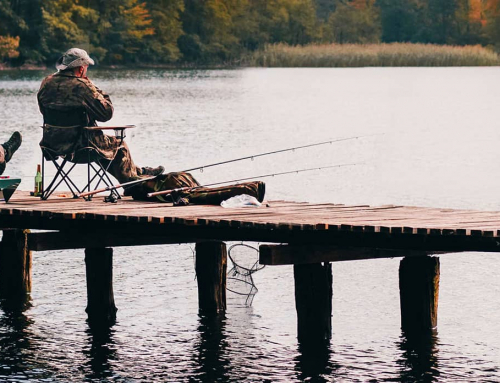We may earn money or products from the companies mentioned in this post at no additional cost to you.
What’s The Best Fishing Line for Trout?
There’s nothing like reeling in a beautiful trout. Trout fishing requires extra cunning and careful selection of tackle but rewards you with a great feeling when you reel in a big boy. If you’re going to outsmart the trout, it begins with a carefully planned and properly executed trout rig.
There are many factors that go into a great trout rig but one of the most important is the line. Let’s figure out the best fishing line for trout on both fly fishing and traditional setups and how to choose the right line for your environment.
Basics of the Trout Line Setup
Knowing how to rig a trout fishing line setup can help you understand why you’re choosing a certain trout line weight and how it’s best utilized. Trout line setups will vary depending on what species and their potential size you’re fishing, but let’s go over the basics.
Fly Fishing Trout Setup – Setups will differ depending on the size of the trout, but most fly-fishing trout setups employ:
Monofilament line
Bobber stop (use a bobber stop knot)
Indicator bead
Slip bobber (optional)
Sliding sinker/split shot
Barrel swivel
1-2 ft Leader
Size 8-14 hook/trout lure
Traditional Fishing Trout Setup – If you’re using a traditional spinning reel, you’ll need a different setup. Most traditional trout fishing line setups look like this:
Fly line
8 – 12 ft leader (attach to fly line with blood knot)
Indicator (6 – 8 inches from the fly line)
3–5 ft tippet (5x to 6x) (attach to the leader with barrel swivel or double surgeon knot)
Fly
Should You Go Trout Fishing with 4lb or 6lb Line?
Choosing between 4lb or 6lb fishing line is the one of the most common trout fishing questions but you need to ask your own questions to get the right answer, specifically – how big are the fish? If you casting for massive rainbows or tigers you’ll need to make sure your line can accommodate the catch or you’ll lose fish all day. If you’re using a line that’s too big for what’s out there, you’ll keep spooking them away. Use this easy guide for matching your line to what you think is lurking below the waters.
- 2lb – Small trout
- 4lb – Small to medium trout
- 6lb – Medium to large trout
- 8lb+ – Large trout
What is the Best Type of Fishing Line for Trout?
There are several types of fishing line including fluorocarbon and braided, but monofilament is the best overall fishing line for trout. Monofilament is the most popular type for fly fishing for several reasons.
- Versatile – Versatility is the primary reason monofilament is the best fishing line for trout. It can be used for multiple types of trout fishing styles, fit on multiple reels, and is available in several weights. Monofilament will work for about any trout.
- Multiple Colors – Your line’s color is important for weary trout, but monofilament comes in multiple colors. By matching your line to water color you’ll have a better chance of snagging more fish.
- Available and Inexpensive – Monofilament is available virtually anywhere fishing line is sold and is the least expensive of the three major line types.
- Slow Sink – Monofilament won’t sink as hard or fast as heavier fluorocarbon or braided lines, making it ideal for fishing surface flies.
Can You Use Fluorocarbon Fishing Line for Trout?
Absolutely. Monofilament is the most popular fishing line for trout but fluorocarbon has its uses too. Many anglers opt for fluorocarbon line over monofilament thanks to its added strength, faster sinking action, and invisibility. If you’re fishing larger trout – fluorocarbon is your best friend.
Can You Use Braided Fishing Line for Trout?
Sure. Braided line is chunkier than monofilament, so it’s more likely to spook trout, but braided line is useful for troll fishing. If you’re fishing for colossal trout, a braided line might be the safest bet to keep them on the line.
Other Fishing Line Tips for Catching Trout
Select the Right Color – Trout scare easier than most freshwater species so the more ‘invisible’ your line is, the less likely they’ll be spooked. Matching your line to water color is helpful at hiding line. Clear should be your default choice if you can’t find exact matches.
Watch Your Weight – Heavier lines are much more visible to trout. Use the smallest weight line possible that can still handle your target fish to avoid scaring them off. It’ll also make for much more exciting fishing when you hook one.
Reel ‘Em in with the Best Fishing Line for Trout
The best fishing line for trout depends on where you’re fishing and the size of fish but 4 – 6lb monofilament line is generally the best for trout fishing. Experiment with different lines, combinations, and techniques to find the perfect line for your next trout fishing adventure.





